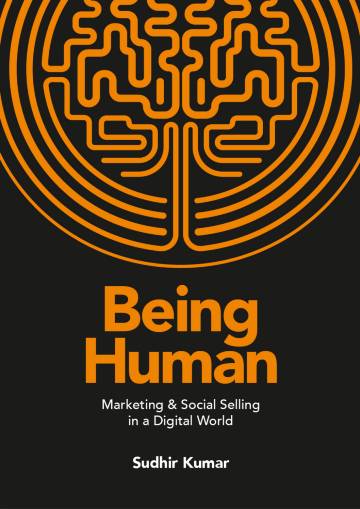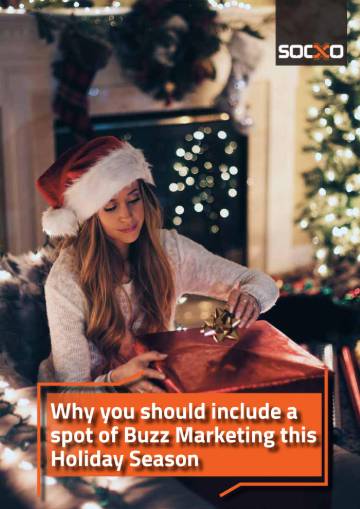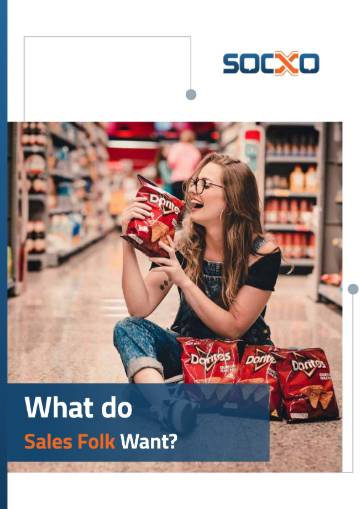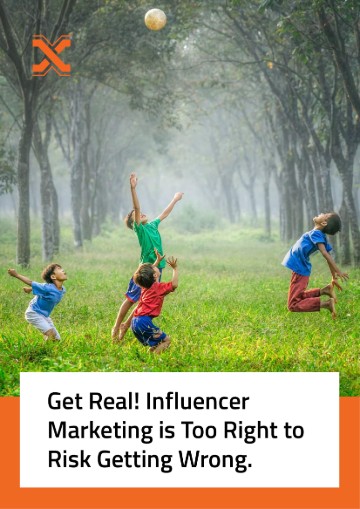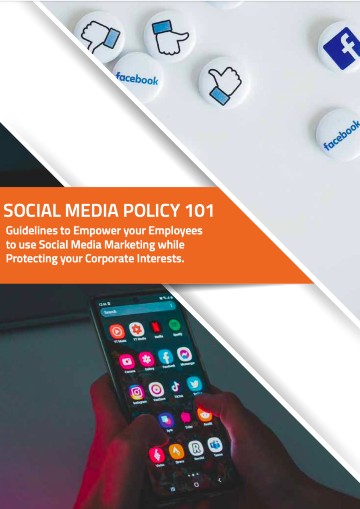
Introduction
As the world prepares to plunge back into the holiday mood with fewer pandemic restrictions, marketers are rolling up their sleeves and preparing for a rebound through an effective Holiday Season Marketing approach. The special circumstances in the year have transformed the way people shop – and it is set to change the way people respond to festivities. Consumers’ shopping behaviour this festive season is bound to be more online than offline, with only 14% of consumers inclined to shop in retail stores, according to Think With Google. 31% of consumers in the US agreed to have started their holiday season shopping as early as June in 2021, a data point established by Google again.
The pandemic has truly been a unique instance in the commercial metamorphosis. Marketers would do well to adapt their traditional marketing strategies to fit the prevailing trends. Amazon’s recent commercial proves the point brilliantly: a ballerina chosen for her dream show now having to follow mandatory restrictions as the display stands cancelled – and the community coming together through Amazon’s e-commerce to set up a stage for her to perform. See where this leads to?
Holiday marketing this season needs a total revamping, given how the rapid acceleration in technology has habituated the consumers into the more convenient shopping methods. Big Data analytics can be utilized effectively to map consumer behavior and craft holiday marketing campaigns around it.
Let’s understand how holiday marketing can be done right the contemporary way, with modern tools.
If you want to skip to specific sections of interest, you can choose from the links below:
- What is Holiday Season Marketing?
- Trends in Holiday Shopping
- How to Use Data and Trends for Holiday Season Marketing?
- Holiday Season Marketing Strategies That Always Work
- Holiday Season Marketing Staple Drill
- Holiday Season Marketing During Pandemic
- Conclusion
What is Holiday Season Marketing?
The holiday season is laced with public sentiment and emotion. Shopping has become like a ritual during festivals. Families get together, people buy gifts for each other; in essence, this season is an opportunity for the CPG brands to make the highest sales of the year. The National Retail Federation, not surprisingly, has predicted for retail sales to rise from $789.4 billion in 2020 to $4.3 trillion in 2021.
To make the most of this opportunity, brands revamp their marketing efforts (tailoring them to fit the holiday mood), come up with exciting offers, deals, combos, and all manner of intensified promotional strategies that aim to boost sales. This is termed holiday marketing.
From introducing special packaging in season’s colors to announcing new launches, updates, or even gifting versions of the same products, marketers think up endless strategies to get products flying off their shelves.
Especially now than ever, when the people have been starved of normalcy, socialization, and familial gatherings, the holiday season holds more importance than any time before. For the brands, this means two things:
- Leverage the opportunity to woo the holiday shoppers
- Deal with competing brands to improve sales
This is where holiday marketing matters most. To gain more detailed insights on holiday marketing and to setup a five-step plan for holiday marketing success, you can download Socxo’s Holiday Season Marketing eBook now.
Trends in Holiday Shopping
The pandemic of 2020 impacted the way people interacted with brands. Not only were they moving around less, but also shopping less. McKinsey found that consumer behaviour changed favouring the brands they trusted; less discretionary spending and a drastic decline in shopping frequency. The 2020 holiday season, too, went by with similar numbers, more or less.
1. Resurgence
2021, however, is different. The holiday spree began as early as June this year; 87% of the respondents in an IBM study agreed to shop for the festivities. The accelerated drives for vaccination and COVID-19 safety measures kicking into the leisure and travel industry have also played a part in shifting the consumer mood in favour of purchasing.
2. Early Birds
The same IBM study also highlights another very important factor that holiday marketers can leverage. Disruptions that happened in the CPG business’s supply chains in 2020 have somehow overspilled into 2021, and consumers are aware of that. This has contributed to the aggressive e-commerce activity registered for the holiday season as early as September (27% of the shoppers) – only. Hence, they can purchase everything on their wish lists. While usually, the shopping spree starts around November during the Black Friday season, this year, almost half the consumers admitted to starting their holiday splurges earlier than before.
3. Emotional Involvement
With the pandemic keeping families apart, the 2021 holiday season is big on the emotional quotient. People intend to grab the opportunity to travel during the holidays while it lasts and meet up with family and friends. This study found that 37% of the respondents plan to travel to the family this holiday season; travel budgets are also higher by 43% over the previous year. Marketers are inclined to leverage this emotional quotient for their holiday marketing campaigns.
4. Perpetuation of E-Commerce
EMarketer forecasts that online shopping will continue to dominate shopping trends even after the subsidence of the virus. Cyber Monday, Black Friday, and Thanksgiving shopping sprees are likely to come in as the top three rankers in spending quanta. This directly points to the significance of having a digital, omnichannel commerce setup in place, in addition to targeting marketing objectives to align with online trends this holiday season.
5. Preference for Convenience
COVID-19 taught consumers to maintain social distancing, and the habit hasn’t yet dissolved. Even with the virus receding, consumers who have become familiar with (and used to) the more convenient shopping methods are seeking to continue the trend. According to National Retail Federation, the Buy Online, Pick up at Store (BOPIS) model has become the preferred way to shop for 9 consumers in 10. The same report highlights that 9 in 10 consumers would prefer to purchase from a retailer that brings convenience into the mix. BOPIS and BOPAC (Buy Online and Pick up at Curb) could become great marketing touchpoints this holiday season: marketers take note.
6. Digitality
The significance of marketing over digital channels has increased since the pandemic, when digital media consumption has exploded in the past year and is forecasted to increase further by 2% this year, according to Emarketer. Omnichannel, cross-channel and multichannel marketing strategies have become even more important now than ever before – especially for the holidays. Reaching the consumers where they are is a good tactic to adopt this holiday season.
With that said, the footfall in retail stores is also increasing, as Forbes established. COVID-19 safety measures, vaccinations, and growing awareness of preventive behaviour among the populace bring back the traditional shopping style. Crafting consumer experiences in-store would also hold an important role in holiday marketing.
How to Use Data and Trends for Holiday Marketing
Today, data is power. Knowing how consumers move with seasons, what they are buying, how frequently, and how much they are willing to spend assists, marketers with creating the right holiday marketing campaigns that genuinely boost sales.
However, not all data is useful; with data collection comes the responsibility to filter and categorize it before it can be used for holiday marketing. Here is how it can be achieved. As established, consumer shopping behaviour this year will be laced with higher spending; holiday marketers need to adopt certain best practices to handle data so that it is helpful, not stressful.
1. Assess The Data Quality
Working with outdated or irrelevant data is never going to yield desired results. Data quality can be assessed by checking it against these two flags:
- The source of data
- The frequency of data updates
When outsourcing data collection to an agency, understand how they accumulate their data. Whether it is first-hand, second-hand, or sourced from any other resource, also find out how recent their data is and how frequently they update it (since consumer behaviour is highly volatile; for example, a consumer’s contact information may change often).
2. Get Analytics up and Running
Working with data manually is no longer an option. One, it is humanly impossible to deal with the volumes of inflowing information today; two, it may induce errors. Getting a robust analytics and reporting system in place helps your organization make sense of the collected consumer data by creating custom cohorts, reporting specific metrics and parameters as per requirement – helping you target even the narrowest of audience classes.
3. Automate
Automation is huge today with Big Data and analytics. As far as possible, try to automate all the processes involved with data handling and management to make it easier to find your needle in a haystack.
Holiday Marketing Strategies That Always Work
While the holiday season involves specialized marketing techniques and strategies, they don’t necessarily have to be novel or pioneered. Holiday marketing can also safely be bet on the time-tested marketing methods that have survived years on end through countless holiday seasons. With these sure-fire holiday marketing strategies, all you need to do is a little tweaking to get them to work for you.
1. Emotions
The pandemic took a heavy emotional toll on the population; the primary reason for record-breaking holiday behaviour this year can be largely pinned to that fact. With the travel restrictions lifting, people are willing to spend more on travelling, as IBM reports how the people’s holiday travel budgets rose this year to 8.2% compared to 5.7% last year. Adding an emotional angle to holiday marketing so that people can relate to it goes the extra mile in connecting with the audiences.
2. Giveaways
The holiday mood also encompasses the feeling of giving and making merry. To ensure that their brand remains in the highlight during holiday seasons, many marketers adopt giveaways – these could be towards charity or socially noble acts, from one business to another, or simply a direct-to-consumer thing. The objective is to embody the generosity that festivities bring.
Actively staying in the news for giveaways is a successfully tested way of staying in your customer’s mind.
3. Making Shopping Simpler for Consumers
For most of the population, choosing what to gift people is a real conundrum. Brands have, for a long, come up with inventive ideas to streamline their shopping through the creation of curated ranges that specifically target “For Grandma,” “For Grandpa,” “For Mum/Dad,” etc., shortening the decision process and facilitating quick checkouts. The attempt at creating unique curations that are likely to be picked up better than others.
Ready-to-ship packages have always been a customer favourite for the busy people of the world.
4. Adopting Technology
You can’t ignore this elephant in the room any longer. Technology – digitality, more specifically – has brought a truckload of new channels where consumers can get in touch with a brand, like instant messaging apps, social media, SMS, email, and whatnot. The best contemporary solution for effective holiday marketing is to create as many touchpoints with a consumer as possible. Bring in your holiday marketers to craft omnichannel, multichannel, and cross-channel strategies to increase brand presence and awareness.
5. Linking it to a Cause
In addition to giveaways, the next best thing that appeals to the customers is knowing that your brand isn’t in it for just sales or profits – that it is aiming to give back to the community in some way. For example, if you run a bakery, you could market to your audience that your bakery donates one pack to an orphanage for every gingerbread pack they purchase. It could be anything. The idea is to let people know that they, too, can contribute to the larger holiday generosity through your brand.
Holiday Marketing Staple Drill
Holiday shopping began early this year. This says that brands have had less time to prepare for the season; with that said, the staple strategies that have always been around in the market for eons have helped them tackle this unprecedented surge without falling apart. Some techniques that any brand can always adopt are listed below.
1. Rise Early
Brands that prepare months in advance of the holiday season are the ones that sail through it without difficulties. Especially in the context of the pandemic and the heavy inflow of shoppers as early as September this year, the brands that prepared earlier than usual have higher chances of sailing through the season without storms. According to Google, by the end of Black Friday, shoppers already complete 42% of their holiday shopping – and that’s what you want to leverage.
2. Get Inspired
Has your brand run a massively successful holiday campaign before? If yes, try to adopt the same concept this year as well. There is no better teacher than past successes/mistakes. Look at other brands in the same industry as yours, and see what they are doing right or wrong. Tweak the concept to fit the ideals of your brand and begin marketing for the holiday season. Pioneering new concepts each year can get tiring and taxing; try to get inspired from others instead.
3. Rebrand for The Holidays
Nothing connects you better with your audience other than the fact that your brand, too, loves the holidays. Adopt the season’s colors, redesign your packaging, redecorate the store, launch new uniforms for your representatives – the whole shebang. Update your website to reflect the mood. Reimagine the face of your brand for the holidays. This works very well to attract more consumers to your brand.
4. Create Exclusive Feeds for Holiday Products
Often for the consumers, it isn’t easy to decide what to get people for the holidays. On all your digital channels, ensure that your brand has exclusive feeds, pages, blogs, resources (and the like) dedicated to the holiday mood. Assemble ready-to-buy gift hampers, offers, discounts, deals, membership bonuses, etc., all in one place for the users.
5. Reassess Your Consumers
Holiday shopping trends are very different from your regular shopper trends. People rarely buy things for themselves during holidays – it is largely about gifts. Translating this into simpler terms, your buyer isn’t the ultimate end-user. Holiday marketing campaigns need to be crafted to suit the end-user in a way that convinces your buyer that the product is suitable.
6. Always Test Your Holiday Marketing Strategy
Coming up with a great strategy is one thing; having it running successfully is another. Find ways to test out your holiday marketing strategies by running surveys or sending out feelers to assess whether or not it has any likelihood of performing the way you would want it to. If not, your brand would have time to regroup and replan. If it runs successfully, you can begin building on that strategy in more creative ways.
7. Use Custom Labels
Many analytics and data tools are available today to assist with creating exclusive data management labels for holiday marketing campaigns. For example, Google Merchant allows creating custom labels for different groups in your campaign so that the data you collect is segregated right at the source.
8. Tweak Your Smart Bidding
For your holiday marketing campaigns running online, using AI and machine learning tools will help you understand how to adjust your smart bidding strategies. If your forecasts predict a surge in conversion rates coming up soon, you can adjust your bidding strategy and ROAS goals to enable your marketers to capture the entire spectrum of audience.
9. Celebrate With Consumers
Merely rebranding to reflect the holiday mood isn’t enough – ensure that your customers see your brand is celebrating with them. In addition to re-theming all your online and offline outlets, add a little trinket as a gift at checkout (for example, a Christmas tree bauble or candies).
Holiday Marketing During Pandemic
The holiday season is already a busy time for marketers. With the pandemic that left the world wondering, brands have become even more complicated to manage their campaigns. Commerce has suffered – from store shutting down to restrictions in the supply chain, shortage of delivery partners, and delays in technology adoption have also had a role to play. That said, the world is bouncing back bit by bit. However, holiday marketing in the face of COVID-19 needs to be readjusted a little bit.
1. October
This month marks the start of festivities with the onset of Halloween. Before that, there were two major events that e-commerce biggies have successfully leveraged. The Amazon Prime Day, a two-day shopping bonanza, gets two birds with one stone. In addition to launching thoroughly exciting schemes and discounts during these two days, Amazon makes it Prime-exclusive. This works to get them sign-on and sales in one go.
2. November
Known for the famous-infamous Black Friday, Cyber Sunday, and Cyber Monday, the Thanksgiving mega-sales attract more shoppers than anytime else. Facebook assesses that these shoppers are 73% more likely to spend more during Black Friday through Cyber Monday than anytime else during the holidays. Brands need to find ways to rise above competition and leverage this number.
It works brilliantly to launch teasers before these mega-sales go live and (based on traffic) announce extensions and exciting deal furtherance to sustain the late shoppers. Consider leveraging Giving Tuesdays.
3. December
The entire month can be utilized to poise your sales strategies for Hannukah, Christmas, and New Year’s. This high competition and declining normal curve demand greater attention, creating a more aggressive, targeted strategy to keep consumers shopping. Most of the holiday shopping concludes by the end of November; you could leverage the white-collar audience or those who have missed the mega-sale deals by giving them another chance throughout December.
Conclusion
The holiday season is a highly-strung, neurotic time for the world, and holiday marketers need to be ready to cut through that noise with strategies that relieve their consumers of the stress and boost the holiday mood.
The pandemic notwithstanding, brands have ample opportunity to rebound into business; as far as the statistics go, the numbers are in favour. The population is starved of celebrations; e-commerce has become an ally, reaching consumers has never been this easy. Strategizing would need to be done on a different tangent. However, it isn’t impossible to rethink and reposition a brand to best make use of this tide.
With strategies that are time-tested or pioneered, following earlier examples, and enriching each outreach with quality data, consistently using the presented opportunity, holiday marketing this year can be managed effectively.







